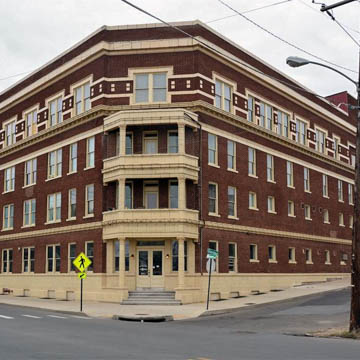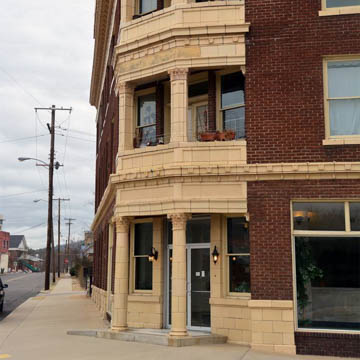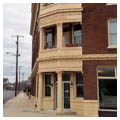Around 1903, John L. Webb established the Supreme Lodge of the Woodmen of Union, an African American fraternal organization, in Yazoo, Mississippi. By 1918, Webb, a Tuskegee-trained builder and contractor, had moved to Hot Springs with his wife, Carrie, and their daughter, Emma. Here he made the city the headquarters of the organization, and the site for this building was purchased in 1919. The large four-story brick building trimmed with cream-colored terra-cotta is Classical Revival in influence and has canted entrances at the Gulpha and Garden street corners, each with a portico carried on two Corinthian columns above which are small balconies at the second and third floors. An entrance near the center of the long Malvern Street side is surmounted by three balconies. The building accommodated multiple functions and activities, including shops at ground level, a bathhouse (bathhouses and other facilities on Central Avenue were restricted to white patrons), a 75-room hotel, a 100-bed hospital and a nurses’ training school, a bank, a printing plant, a 2,500-seat auditorium on the fourth floor (which over the years featured such musicians as Count Basie and Duke Ellington), and the organization’s executive offices. In 1948, the building was sold to the National Baptist Association and became known as the National Baptist Hotel and Bath House. Following desegregation, as the bathhouse facilities in Hot Springs slowly were integrated, the hotel struggled to remain open; it closed in 1981, and was converted to apartments for seniors in 2011.
Another multipurpose building for black patrons that included a bathhouse was the Pythian, designed by African American architect W. T. Bailey (415 Malvern; demolished). Webb’s house (c. 1900) at 403 Pleasant Street, which he purchased in the early 1920s, is being restored.







